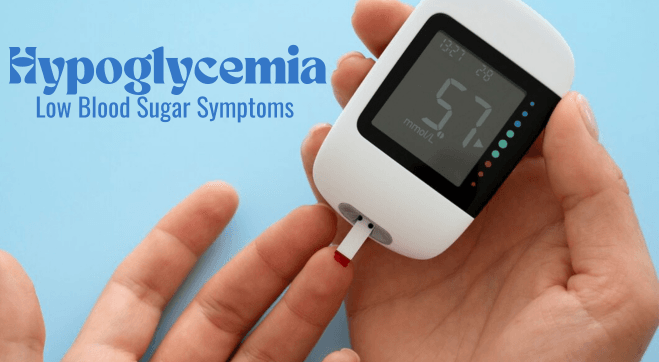Elevated blood sugar levels on a medical chart signify the looming threat of diabetes, a condition that affects millions globally. Understanding these figures is crucial for maintaining health, whether it’s the sudden dangers of a spike or the gradual toll of sustained high levels. Additionally, the hereditary aspects of diabetes often raise concerns about its inevitability in family lines.
Did you know:
- Global Impact: As of the 2019 study, 9.3% of the world’s population was affected by diabetes, with the expectation that it will rise to 10.2% by 2030. 1
- Pregnancy Concerns: The rate of gestational diabetes mellitus stood at 8.3% in 2021, marking a significant health concern for expectant mothers. 2
- Deadly Consequences: Diabetes claimed 1.5 million lives in 2019, with a shocking 48% of these deaths happening before individuals reached 70 years old. 3
- Associated Health Issues: This condition is a leading cause of critical health problems, including heart disease, stroke, kidney failure, and blindness.
This information naturally raises several questions, like what level of blood sugar is dangerous, and what are the consequences of such dangerous levels? Additionally, many people might wonder: Is diabetes genetic?
This article covers answers to all such questions related to blood sugar levels in our body and the effects of their disruption.
Blood Sugar and its Importance in the Body
Before we discuss dangerous blood sugar levels for body, you must understand the importance of blood sugar in our body.
Blood sugar contains glucose, one of the most crucial energy substrates required for the functioning of various body organs, such as the brain and skeletal muscles.
Carbohydrates are the primary source of glucose in our diet. Once absorbed by the intestine, glucose enters the bloodstream. The body can still utilise other molecules, like ketone bodies and fatty acids, for energy when glucose is unavailable. However, they are less effective than glucose in releasing the energy needed to carry out metabolic processes.
Why Does Blood Sugar Matter With Diabetes?
Maintaining blood sugar within a normal range is crucial for preventing diabetes. Our body achieves this through a delicate interplay of hormones and regulatory mechanisms. But, when it reaches dangerous sugar levels, this intricate system becomes overwhelmed and cannot regulate it. It can result in fatal complications that will need aggressive management to avoid further deterioration for the patient.
Moreover, high levels of blood sugar in people with diabetes can increase the risk of developing chronic complications, namely retinopathy, nephropathy, and coronary artery disease.
Hence, get an HbA1c blood test done regularly to determine how well you manage your blood sugar levels. HbA1C levels are always preferred over random blood sugar levels since they can detect prediabetes. However, for patients experiencing medication adjustments or uncontrolled blood sugar, more frequent testing (every 3 months) may be necessary. 4
What Level of Blood Sugar is dangerous?
Dangerous blood sugar levels can occur when your levels are either significantly high or very low for extended periods. Early diagnosis and treatment can help prevent serious complications from both high and low blood sugar.
Dangerously low blood sugar level
When we think of what level of blood sugar is dangerous? we often assume that only high blood sugar levels are harmful, but low blood sugar levels can be equally concerning.
Anything below 70 mg/dl is considered to be a dangerously low blood sugar level and is characteristic of a condition called hypoglycemia. If you’re experiencing symptoms like sudden weakness and dizziness, you are hypoglycemic. In some rare instances, hypoglycemia causes a loss of consciousness. 5
Repeated episodes of low blood sugar (hypoglycemia) can be dangerous. They can impair brain function and potentially cause lasting damage to the nervous system.
Dangerously high blood sugar level
Anything over 250 mg/dl is considered dangerous in the context of high blood sugar levels and should prompt medical action.
More so, if there are two or more documented values of 300 mg/dl, then the patient is said to have dangerous blood sugar levels. They are more likely to develop acute complications of uncontrolled diabetes mellitus, namely diabetic ketoacidosis, more common in patients with diabetes type 1, and hyperosmolar coma, more prevalent in patients with diabetes mellitus type 2.
How can uncontrolled blood sugar levels damage various organs and systems in the body?
Uncontrolled blood sugar levels may cause damage to various organs in the body through an interconnected series of metabolic pathways. Some of the most important ones that merit a mention include:
- Formation of advanced glycation end products: It is the most common pathway and occurs in patients with dangerous sugar levels. A series of non-enzymatic reactions occur between the intermediates produced from the breakdown of glucose and proteins in our body. It leads to the formation of advanced glycation end products, contributing to atherosclerosis and thereby increasing the risk of developing coronary artery disease. 6
- Activation of Protein Kinase C: Protein kinase C (PKC) is activated by high blood sugar levels. This activation plays a key role in releasing factors that cause new blood vessels to grow. Unfortunately, these new vessels can be fragile and leaky, contributing to problems in the vascular system. 7
- Disturbances in the polyol pathway: Due to high blood sugar levels, glucose gets converted to sorbitol, a reactive intermediate that accumulates in the retina, leading to increased osmotic pressure and contributing to the development of diabetic retinopathy in such patients. 8
Problems Associated with Dangerous Blood Sugar Levels
Now that you have understood what level of blood sugar is dangerous, the next step is to understand its implications on your body. The presence of dangerous blood sugar levels can have far-reaching impacts on your body, extending from your head to your foot. Some of the most significant complications of having dangerous sugar levels are listed below.
Heart diseases and stroke
One of the most significant dangers of uncontrolled diabetes is the increased incidence of fatal heart disease and stroke.
Studies have found that people with diabetes are twice as likely to develop heart disease. The risk of developing such complications increases with age. Having diabetes for a longer duration increases your risk of developing heart disease and stroke. Hence, it may be prudent to opt for a complete blood test package that can detect such aberrations early and prevent a patient from developing heart disease. 9
While heart disease is a broad umbrella term that encompasses a large group of conditions, coronary artery disease (CAD) is said to be the most common condition seen in diabetics. CAD arises when plaque buildup in the heart’s arteries restricts blood flow to the heart muscle.
Patients with dangerous blood sugar levels are also prone to developing heart failure, which occurs when the heart loses the ability to pump blood to various parts of the body. This condition can cause fluid buildup in the tissues, leading to swelling in the feet (pedal oedema) and lungs (pleural effusion).
Kidney diseases
Yet another vital component of the dangers of uncontrolled diabetes is the development of diabetic nephropathy, a condition that causes a decline in kidney function over time. Half of patients with type 2 diabetes mellitus and one-third of patients with type 1 diabetes mellitus will develop diabetic nephropathy. 10
Moreover, patients with diabetic nephropathy may progress over time to develop end-stage renal disease (ESRD) and end up becoming dialysis dependent.
The development of diabetic nephropathy is attributed to the fact that excess blood sugar levels may cause irreversible changes in the tiny blood vessels in the kidney, hampering their filtration ability and hence causing leakage of integral proteins in the urine. Though the prognosis of patients is worrisome, it’s crucial to recognise the features early and get treated for them immediately.
If you experience any of the following symptoms, it’s important to see a doctor to rule out diabetic nephropathy:
- Generalised swelling of body tissues
- Difficulty breathing
- Decreased appetite, and
- Foamy urine
Diagnosis demands laboratory tests, like glomerular filtration rate, urinary albumin test, and albumin/ creatinine ratio.
Nerve damage (neuropathy)
In addition to affecting the kidneys and heart, alarmingly high sugar levels can also damage nerves. It is called diabetic neuropathy. Since different nerve fibres can be damaged by diabetic neuropathy, symptoms can vary a lot from person to person. Its subtypes include:
- Peripheral neuropathy– It is a subtype of diabetic neuropathy where the nerves in your extremities are affected. Peripheral neuropathy is one of the most common presentations of diabetic neuropathy and affects about one-third of patients.
- Autonomic neuropathy– This subtype of diabetic neuropathy typically affects the nerve fibres that regulate the functioning of your visceral organs. Some of the systems implicated are the gastrointestinal, genitourinary, and reproductive system. Patients may also experience changes in blood pressure and heart rate.
- Focal neuropathy– A subtype characterised by damage to a single nerve, affecting their ability to coordinate movements. Entrapment neuropathies like carpal tunnel syndrome also occur in this subcategory.
- Proximal neuropathy– It is a disabling form of neuropathy that hampers the functioning of a group of muscles on one side of the body. It is mostly self-resolving and does not generally need further medical intervention.
Eye problems (retinopathy)
Diabetic retinopathy is progressing to be one of the foremost causes of blindness in developing countries. Similar to how alarmingly high blood sugar levels are damaging the vessels of the heart, it may also lead to a blockage in the retinal vasculature. Your body tries to compensate for this by forming new blood vessels to replace the damaged ones, but they aren’t all that effective and tend to be leaky.
Some vital features to look out for are the presence of floaters in your visual field, blurring of vision, dark spots in your visual field, and, finally, visual loss. It is prudent that you visit an ophthalmologist if you’re experiencing such symptoms since diabetic retinopathy may lead to the development of other complications like diabetic macular oedema, retinal detachment, glaucoma, and vitreous haemorrhage.
Foot problems
Foot problems are prevalent in diabetic patients. Damage to nerves in the foot may lead to a tingling sensation and pain all over the foot. This condition may aggravate, making the patient lose all sensations in their foot. In turn, it may predispose patients to increased infections since they are unaware of a blister over their feet or a foreign body stuck to the bottom of their feet.
On the other hand, dangerous blood sugar levels may compromise the blood flow over the foot, leading to a condition called peripheral vascular disease. It may lead to skin changes, pain even during rest, foot ulcers, feeble pulses over the feet, loss of hair on the legs, and, in some rare cases, gangrene of the toe, which unfortunately may necessitate an amputation and loss of limb.
So, its better to check the list of lab tests for diabetic patients and get them done regularly.
Skin issues
The skin changes associated with diabetes mellitus are called diabetic dermopathy. They cause brownish, scaly patches on the skin, which are sometimes called shin spots 11.
Other uncommon features include skin stiffening and blister-like lesions over the feet. The reason for their development is poorly understood. However, irreversible damage to blood vessels and nerves may be responsible. Higher levels of glycosylated haemoglobin (HbA1C) an indicator of poor sugar control, are said to have a positive correlation with the development of diabetic dermopathy.
Uncontrolled diabetes can lead to sluggish blood circulation. It also delays wound healing due to the reduced availability of the necessary components for tissue repair. In addition, diabetic neuropathy may also worsen healing.
Sexual dysfunction
Males with diabetes mellitus are susceptible to an increased risk of erectile dysfunction. The presence of dangerous blood sugar levels can weaken the blood vessels and nerves present around the genitals. Consequently, it may be harder to sustain an erection. 12
Some people with diabetes may also have a rare condition called Leriche syndrome. This happens when the main arteries supplying blood to the legs get blocked.
People with Leriche syndrome often experience three main symptoms:
- They can’t feel pulses in their legs below the groin
- They get leg pain when they walk (claudication)
- Men with this condition may also have trouble getting an erection (impotence)
Mental health
One of the more subtle yet often ignored dangers of uncontrolled diabetes is an increased incidence of mental health conditions such as depression and anxiety. Modern studies have detected that diabetes patients are two or three times more likely to develop depression than others.13
Seek help from a mental health professional if you are experiencing symptoms such as prolonged sadness, loss of interest in activities you once enjoyed, feelings of hopelessness, loss of appetite, difficulty sleeping, or suicidal thoughts.
Managing a chronic condition like diabetes may be worrisome for a lot of patients and may additionally make them very anxious. Diabetes patients have a 20% higher chance of developing anxiety than others 14. The symptoms of an anxiety attack may resemble a bout of hypoglycaemia. However, it may be hard to recognise for some individuals. Hence, seek the help of an expert if you’re feeling overwhelmed.
Prevention and management strategies for healthy blood sugar levels
Several strategies can help you prevent or manage your blood sugar levels, promoting a healthier life. For some individuals, lifestyle changes and dietary modifications alone can be effective. It includes incorporating superfoods for diabetes prevention.
Apart from food, follow these tips to prevent and manage sugar levels:
- Engage in regular physical activity: Aim for at least 150 minutes of moderate-intensity exercise or 75 minutes of vigorous-intensity exercise per week. Exercise helps your body utilise blood sugar for energy, improving overall blood sugar control.
- Maintain a healthy weight: Excess weight can contribute to insulin resistance, making it harder for your body to regulate blood sugar. Losing even a moderate amount of weight can significantly improve blood sugar control.
- Manage stress: Chronic stress can elevate blood sugar levels. Practice stress-management techniques like yoga, meditation, or deep breathing to keep stress under control.
- Get enough sleep: Aim for 7-8 hours of quality sleep each night. Poor sleep can disrupt hormones that regulate blood sugar.
- Stay hydrated: Drinking plenty of water helps your body flush out excess sugar through urine and keeps you hydrated.
However, the majority of patients will require medical treatments via oral hypoglycaemic agents, insulin, or a combination of both. Such patients must get sugar profile tests done regularly to tailor treatments. Compliance with medication is the best way to ensure that you’re least affected by the dangers of uncontrolled diabetes.
Sources
Ref Links:
- Global and regional diabetes prevalence estimates for 2019 and projections for 2030 and 2045
- Percentage of Mothers with Gestational Diabetes
- Diabetes
- Hemoglobin A1C
- Risk Factors of Hypoglycemic Encephalopathy and Prolonged Hypoglycemia in Patients With Severe Hypoglycemia
- Advanced Glycation End Products
- The role of protein kinase C in diabetic microvascular complications
- Redox imbalance stress in diabetes mellitus: Role of the polyol pathway
- Diabetes and Coronary Artery Disease: How Are They Related
- Diabetic kidney disease









